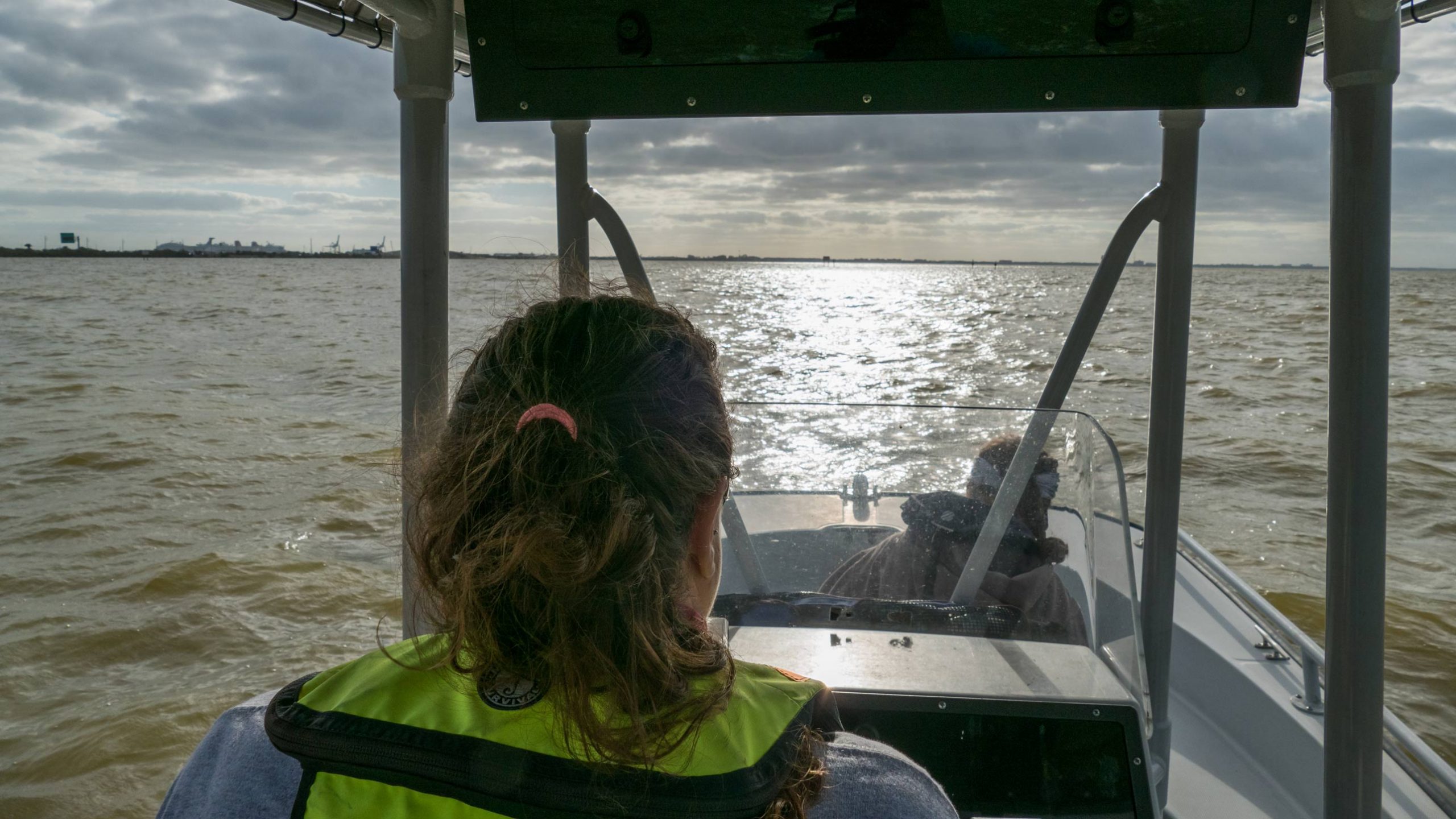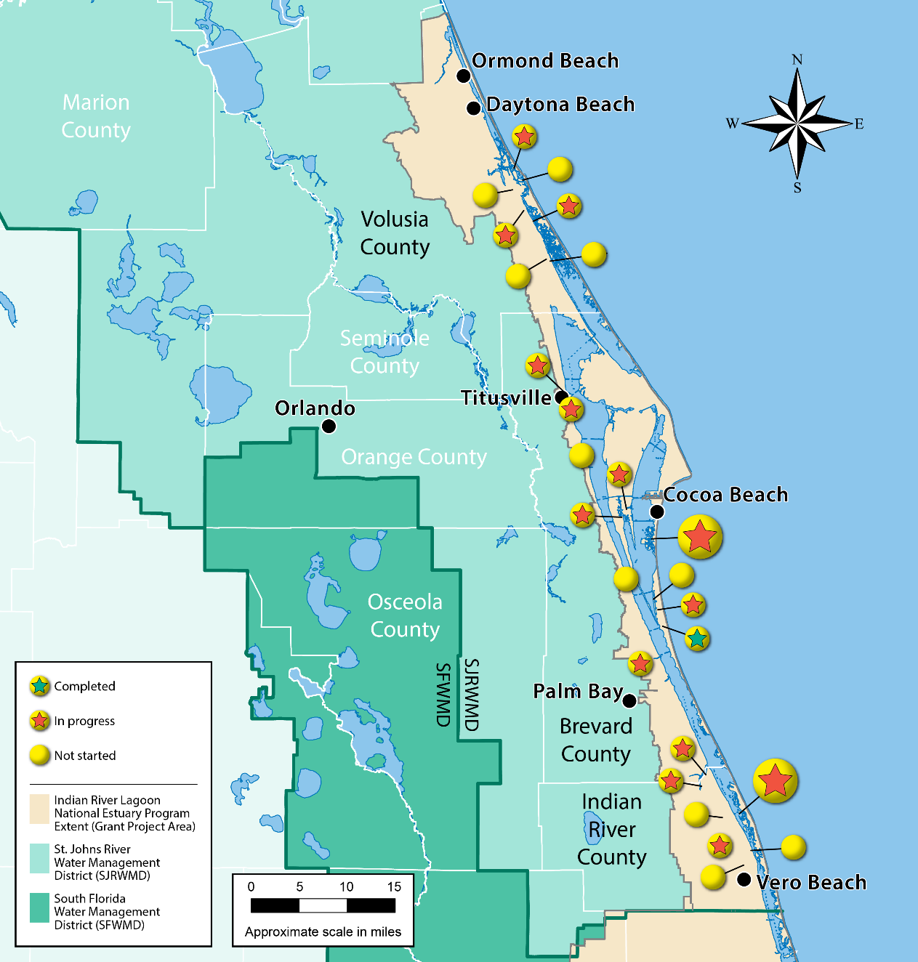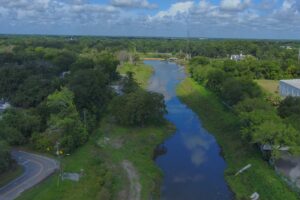Additional water quality improvement projects to receive legislative funding
Aug. 26, 2021
District staff head out on the Indian River Lagoon as part of their routine water quality monitoring work.
The St. Johns River Water Management District continues its partnerships with local governments and others to put projects in the ground to help improve water quality in the Indian River Lagoon.
In fall 2020, the District’s Governing Board approved the ranking of projects to share in water quality improvement funds up to a total of $25 million. Two projects from that ranking — in the City of Cocoa Beach and at the Environmental Learning Center — will now receive cost-share funds for water quality improvement projects focused on low-impact development and septic-to-sewer conversion. These two projects, totaling $223,000, will use the remainder of the $25 million from the fiscal year 2020–2021 Indian River Lagoon Water Quality Improvement Grants, provided by Gov. Ron DeSantis and the Legislature. We are coordinating with the South Florida Water Management District to put the funding to work on water quality projects throughout the lagoon’s watershed.
Projects are:
- The Cocoa Beach Convair Cove Low-Impact Development (LID) and Living Shoreline, which involves the installation of permeable pavers, underground rainwater collection tanks, use of bio-activated media in swales, mangrove and emergent grass plantings, as well as oyster beds. Benefits include reducing nutrient loads to the lagoon by approximately 170 pounds of total nitrogen and 20 pounds of total phosphorus per year.
- Abandoning and replacing the non-profit Environmental Learning Center’s existing septic tank and connecting to Indian River County’s Central Regional Wastewater Treatment Facility, resulting in a reduction of 24 pounds per year of total nitrogen. The new infrastructure will allow for future campus facilities to be connected to the wastewater treatment system, resulting in additional nutrient load reductions.
Combined, the 25 water quality projects are estimated to reduce total nitrogen to the lagoon by 56,334 pounds per year and 3,729 pounds per year of total phosphorus. By early August, the District had executed contracts for 23 projects benefitting lagoon water quality, with 14 projects under construction and one project completed.
These projects are just the latest among many District-led and partner projects in recent years. For example, the Eau Gallie Muck Dredging Project resulted in the removal of more than 600,000 cubic yards (enough to fill 50,000 dump trucks) of black muck from the Indian River Lagoon tributary. In southern Brevard County, we worked with the Melbourne-Tillman Water Control District to divert excess nutrients from Canal 1 away from the lagoon into a retention area where the water from a portion of Palm Bay is treated. Also in Brevard County, our Micco Water Management Area helps improve lagoon water quality by filtering water through a series of ponds and restored wetlands from a 21,000-acre watershed before the water reaches the lagoon.
Among District-led projects to benefit the lagoon is the Crane Creek / M-1 Canal project to reduce nutrients flowing to the lagoon. Construction will reroute water in the M-1 Canal for treatment in a stormwater treatment area prior to discharge to the St. Johns River.
Such projects are vital for the Indian River Lagoon. Spanning 156 miles from Ponce de Leon Inlet in Volusia County to the southern boundary of Martin County, the lagoon supports commercial and recreational fisheries and acts as an economic engine for the region. As of 2014, the annual economic value of the lagoon was estimated to be $7.6 billion, which included nearly 72,000 jobs and recreational opportunities for more than 7.4 million visitors per year.
Changes in the lagoon happened over decades and turning it around will take time. These projects will help the District and its partners move the needle in the important work to improve the lagoon’s water quality. To learn more about the Indian River Lagoon and work under way to improve its health, visit www.sjrwmd.com/waterways/renew-lagoon. For more information about District cost-share opportunities, visit www.sjrwmd.com/localgovernments/funding.







